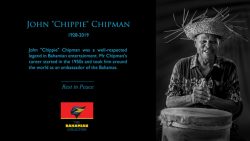There is fertile ground in The Bahamas to facilitate the trafficking of human beings, according to the preliminary findings of an exploratory research on the Trafficking in Persons in the Caribbean Region, compiled by the International Organization for Migration [IOM].
The report, a copy of which has been obtained by The Bahama Journal, has estimated that between 20,000 and 50,000 undocumented Haitians are living in The Bahamas.
The estimate is based in part on research which shows that there are approximately 5,000 registered Haitian migrant workers in the country, supporting 13,000 dependent family members.
モThe Bahamian cultural stigma associated with certain types of employment such as agricultural work, domestic work and manual construction labour has created a demand for cheap labour ヨ a gap that has been filled by irregular migrants, in many cases Haitians in search of paid employment,メ noted the report, which evaluates the issue of trafficking in persons in seven countries in the region.
モThe popular term ムmy Haitian,ᄡ which refers to Haitians employed as domestic labour in many Bahamian households, exemplifies how this thought pervades society,メ it added.
The 143-page document also referred the Grand Bahama Human Rights Committeeᄡs estimate that the total size of the Haitian population is 40,000 to 75,000.
The findings come at a time when there are anxieties over the issue of illegal migration, an element of the trafficking dilemma, and the toll that the problem is taking on The Bahamas. IOM officials were initially in town last year facilitating strategic exercises to aid in their research.
The international migration experts referred to labour exploitation, migrant smuggling and human trafficking all taking place in The Bahamas.
In fact, an IOM representative is still in The Bahamas liasing with government officials over proper mechanisms to determine specific trafficking figures and other essential matters related to the illegal migration issue.
モWhat we are now going through with the IOM expert is to see how close we can get to narrowing the figure and to see how accurate we can get as possible, through methods that they have used elsewhere in the world, and we hope that when the study is completed, the numbers will be more accurate and we will not have such a wide variance between 20,000 and 50,000,メ the Minister of Labour and Immigration Vincent Peet told the Journal.
A few weeks ago, a human rights report on The Bahamas compiled by the United States Department of State referred to unofficial estimates that between 20 and 25 percent of the 300,000 people living in The Bahamas are Haitians or citizens of Haitian descent, making them the largest and most visible ethnic majority in the country. It estimated that 30,000 to 40,000 Haitian citizens, approximately 10 percent of the population, resided in the country illegally.
Trafficking in persons is believed to be a modern-day form of slavery, involving victims who are typically forced, defrauded or coerced into various forms of exploitation. Men women and children are treated as inexpensive, expendable and profitable commodities used for financial gain.
The report also acknowledged that human trafficking has become one of the fastest growing and most lucrative criminal activities in the world.
The Bahamasᄡ proximity to Florida, Haiti, Jamaica and Cuba is a key factor contributing to irregular migration, researchers found. Migration statistics show that the majority of persons entering The Bahamas are Haitian children up to the age of 14, who apparently travel with a relative or parent.
Although most of them live in New Providence, the majority of migrants to Abaco are Haitian female children (383), males (365), followed by Grand Bahama with more males (351) than females (308) and Eleuthera with a female majority.
According to the report: モHuman smuggling and irregular migration are relevant to trafficking because of the vulnerability of migrants who are smuggled. These persons can sometimes fall prey to unscrupulous people who seek to exploit them due to their situation.
モMany irregular immigrants who work in The Bahamas find employment in the agricultural or construction sectors and in prostitution as a means of self-employment and/or survival.メ
That element of vulnerability and the risk of exposure, the IOM pointed out, renders them susceptible to exploitation once they arrive in the country as oftentimes, the subjects feel that the situation here is preferable to returning to their own countries.
In that regard the preliminary report drew a link between the tourism, the sex industry and human trafficking, referring to research that the International Labour Organization has conducted which concluded that モsweetheartingメ between girls and older men, in some cases tourists occurs in The Bahamas.
According to reports, girls under 16, some as young as 12, were involved in various forms of commercial sexual activity.
But the researchers acknowledged that although the interrelation between tourism and prostitution provides another platform of analysis as enough is not yet known about this dimension.
Much of the information to which the study refers was compiled through interviews which the research team conducted with 40 key informants, among them the Haitian Ambassador to The Bahamas Louis Harrold Joseph and the OAS representative to the Bahamas Juliet Mallet Phillip.
More than simply identifying prevalent characteristics and trends, the IOM report, which classified human trafficking as a rapidly expanding global phenomenon, made recommendations on strengthening policy and legal framework, beefing up the investigation and prosecution of traffickers, enhancing prevention and awareness campaigns and assisting victims of the trade.
There was also a suggestion to standardize data collection.
The Bahamas has a locally established national committee on the trafficking in persons of which members of the clergy are a part.
モA number of recommendations we expect will be brought to the government shortly,メ said Minister Peet, referring to the preliminary assessment. モIn fact they have just completed a draft that I am now reviewing and will be taking to cabinet for consideration and a determination.メ
The report also examined the issue in Barbados, Guyana, Jamaica, the Netherlands Antilles, St. Lucia and Suriname.
Tameka Lundy, The Bahama Journal



